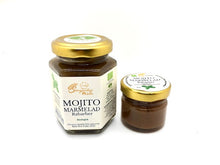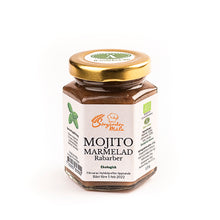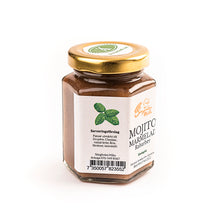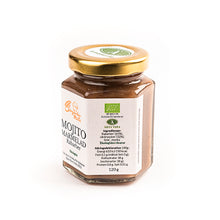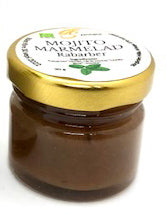
Here we see the first signs of spring of the year. Hail, you healthy jam, who comes with the promise of warmth and pleasure. A lovely jam with the taste of summer, a little spell made from rhubarb, with clear acidity and full of lovely mint. The wide flavor palette takes you on a divine journey wrapped in rhubarb accented by mint and sweet citrus.
Cuba's national drink made like a jam with a Swedish touch of rhubarb. The drink was one of author Ernest Hemingway's favorite drinks and we're sure this would have been among his favorite jam. The secret is to find a balance between acid and mint, then we get a lovely jam with the taste of summer, a little spell made of rhubarb, with clear acidity and full of lovely mint.
Goes well with Gruyère, Cheddar, toast, Brie, cream cheese, lamb
The history of the mojito
Like many cocktails, the origins of this refreshing cocktail are lost in history. From the 16th century to a 2002 James Bond film, the Mojito has had an interesting journey from invention to one of the most popular drinks of the new millennium. As with all cocktail stories, the origin story of the Mojito is often disputed, especially by "La Bodeguita del medio" in Havana, Cuba. This restaurant bar claims to be the birthplace of the cocktail and enjoys the fame associated with Ernest Hemingway's praise for their special version of the drink. It has been claimed that African slaves working in the Cuban sugar cane fields created the drink from “Aguardiente de cana” (Literally “cane fire water”) - a simple sugar cane alcohol. Certainly the name "Mojito" fits this story, derived from the word "Mojo", meaning "to place a little spell". But I prefer an even older original story…
In the 16th century, Sir Francis Drake landed in Havana to plunder the city of its gold. The invasion failed, but luckily for us something good came out of it. His crew suffered from dysentery and scurvy. Local South American Indians were known to have cures for many ailments, so a small party went ashore to Cuba and returned with ingredients for a medicine. They used aguarediente de cana, mint leaves, and juices from sugarcane and limes to put together a tonic that proved effective. We now know that the lime juice was the helpful ingredient, but the others sure made it a lot tastier! A cocktail named "El Draque" with very similar ingredients was known to be popular in Cuba after that time and probably named after Drake himself.
It wouldn't have been called a Mojito in those early days, so it's possible that the African slaves weren't the ones who invented the drink, but the ones who gave it its modern name. The Spanish word "mojadito" (meaning "a little wet") and the Cuban lime-based spice "mojo" are other possible explanations for the name. However it began, the creation of the Bacardi company in the mid-1800s was probably the reason for its spread and growth in popularity, and Ernest Hemingway's personal discovery of the drink in Le Bodeguita del medio created the possibility for it to become one of the most popular modern drinks. More recently, Bacardi's advertising campaigns have focused on making Mojitos at home, and the drink was featured in a scene from the 2002 James Bond film, Die Another Day, as Jinx and Bond flirt by the beach.
Ingredients : Rhubarb*(65%), raw cane sugar*(32%), lime*, mint* *Organic ingredients
Nutrition declaration 100g : Energy 633 kJ/150 kcal; Fat 0.1 g (saturated fat 0 g); Carbohydrates 38 g (sugars 38 g); Protein 0.8 g; Salt 0.01 g









